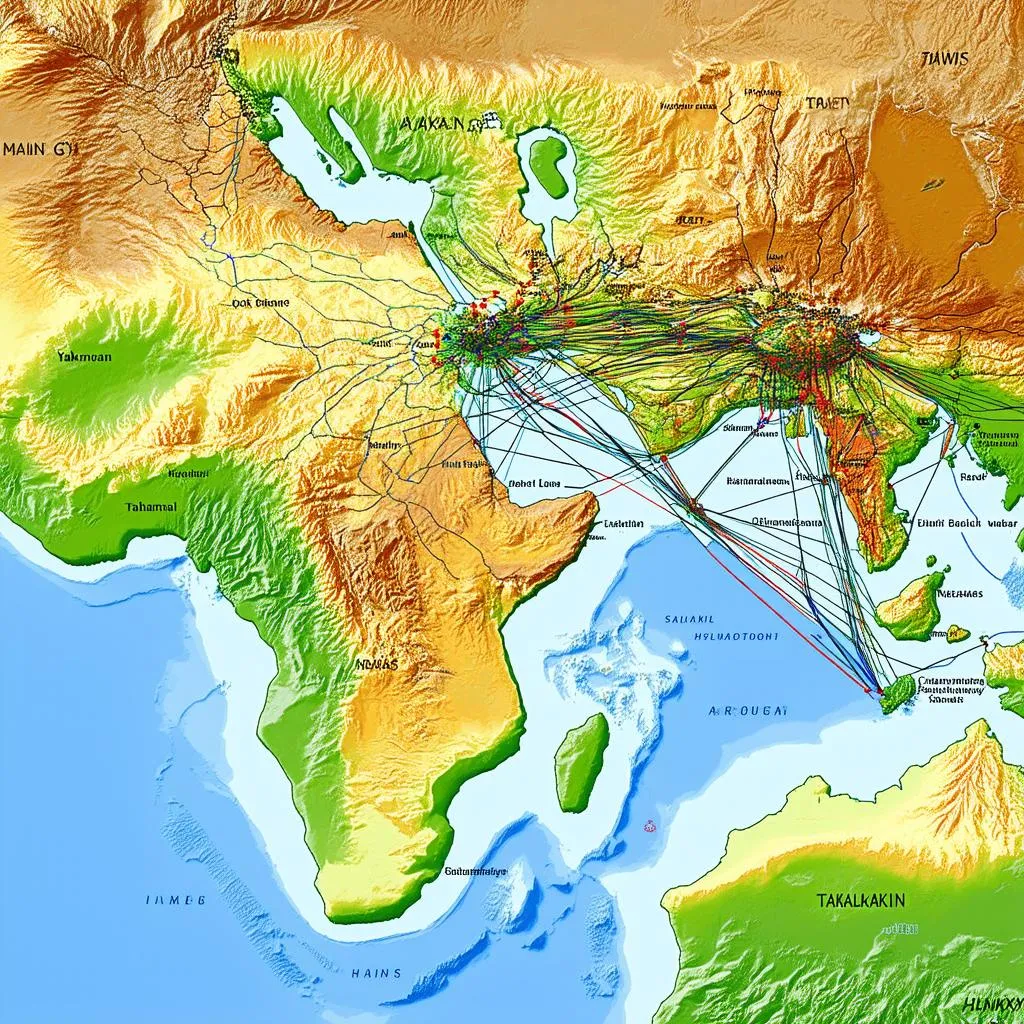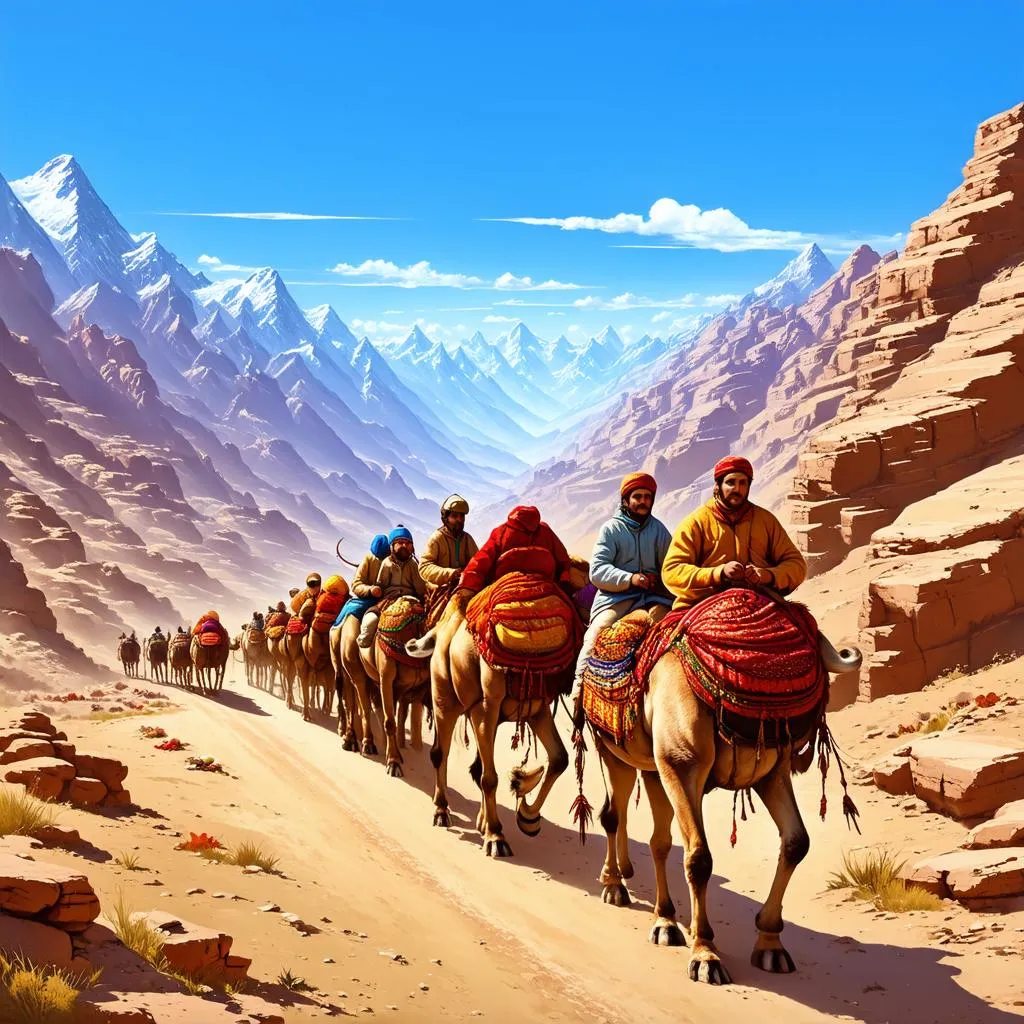Have you ever wondered why the ancient Silk Road, a network of trade routes that connected East and West for centuries, snaked its way northwest across towering mountains and vast deserts instead of taking a seemingly more direct southwest route? It’s a question that has fascinated historians and travelers alike for ages. As someone well-versed in the intricacies of global travel, allow me, your trusted guide from travelcar.edu.vn, to unravel the geographical and historical factors that shaped the Silk Road’s iconic route.
Following the Footsteps of Traders and Conquerors
Contrary to what some might assume, the Silk Road wasn’t one singular road but rather a network of interconnected routes that evolved over time. The choice of direction wasn’t arbitrary; it was dictated by a combination of practical considerations and historical circumstances.
The Lure of the West and Navigating Natural Barriers
1. Topography: Mountains and Deserts:
The most prominent geographical features influencing the Silk Road’s path were the formidable mountain ranges and arid deserts that lay between its starting point in China and its western destinations.
- The Himalayas and the Tibetan Plateau: Imagine yourself as a trader centuries ago, laden with precious silk and spices. Scaling the world’s highest mountain range, the Himalayas, with its treacherous peaks and unpredictable weather, would’ve been an impossible feat. The equally daunting Tibetan Plateau, with its high altitude and harsh conditions, posed a significant barrier to southward travel.
- The Taklamakan Desert: Southwest of the Tibetan Plateau sprawls the Taklamakan, often dubbed the “Sea of Death.” This unforgiving desert, known for its shifting sand dunes and scorching temperatures, presented a formidable obstacle to both humans and animals.
2. Oases: Lifeline of the Desert:
- The Tarim Basin: The northwest direction offered a slightly more hospitable route, skirting the edges of the Taklamakan Desert and taking advantage of the fertile Tarim Basin. This basin, dotted with oases like Kashgar and Turpan, provided essential water sources, rest stops, and trading hubs along the Silk Road. Picture these bustling oases as vibrant intersections of cultures, where merchants from distant lands exchanged goods, stories, and ideas.
3. Existing Trade Routes and Kingdoms:
- The Persian Royal Road: The Silk Road didn’t emerge in a vacuum. It cleverly utilized pre-existing trade networks, such as the Persian Royal Road, which already extended westward from Persia. This strategic integration allowed for smoother trade flow and cultural exchange.
 Ancient Silk Road Trade Routes Map
Ancient Silk Road Trade Routes Map
Historical Forces Shaping the Route
1. The Rise and Fall of Empires:
The Silk Road’s trajectory was deeply intertwined with the political landscape of the time. The rise and fall of empires like the Han Dynasty in China, the Parthian and later Sasanian Empires in Persia, and the Roman Empire in the West influenced the direction and security of trade routes. Political stability within these empires often translated to a flourishing Silk Road.
- The Han Dynasty: Emperor Wu of the Han Dynasty (141-87 BC) played a pivotal role in extending the Silk Road westward. He sought alliances with western powers and expanded Chinese territory, which facilitated trade and cultural exchange.
2. The Nomadic People:
- The Xiongnu: The nomadic Xiongnu people, powerful horsemen and archers, posed a constant threat to the Han Dynasty’s northern and western borders. To secure trade and maintain peace, the Han emperors engaged in a complex relationship with the Xiongnu, involving military campaigns, treaties, and even marriage alliances. This interplay shaped the Silk Road’s northern trajectory.
 Camel Caravan Traversing the Silk Road
Camel Caravan Traversing the Silk Road
Beyond the Horizon: The Enduring Allure of the Silk Road
The Silk Road may have declined centuries ago, but its legacy continues to fascinate us. It wasn’t just about silk and spices; it was a conduit for the exchange of ideas, religions, and technologies that shaped the course of human history.
If you’re intrigued by the Silk Road’s allure, consider planning your own adventure to retrace its ancient paths. Here at travelcar.edu.vn, we specialize in crafting unforgettable travel experiences. Let us be your guide as you explore the wonders of the Silk Road, from the bustling bazaars of Samarkand to the ancient ruins of Dunhuang. Contact us today, and let us help you create memories that will last a lifetime!